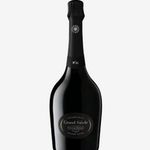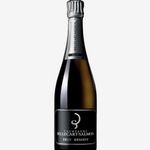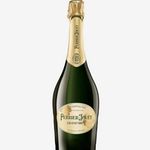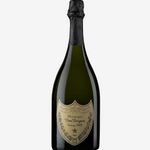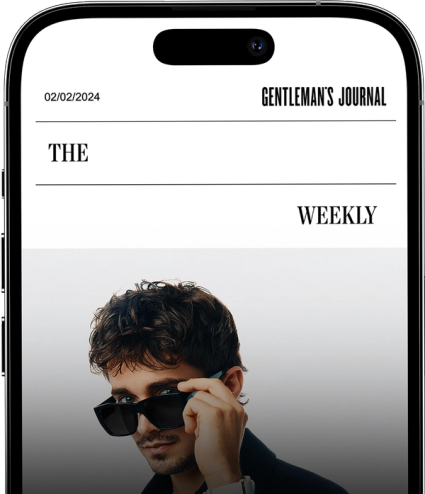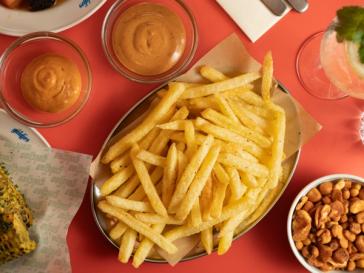

The best Champagnes to gift (and drink) this Christmas
From a classic Louis Roederer Collection to offerings from Ruinart, Perrier-Jouët and Laurent-Perrier, here are the most lavish corks to pop this festive season.
Words: Gentleman's Journal
What comes first – the unwrapping of the gifts or the uncorking of the Champagne? If the present is a bottle of Champagne, then both is the answer. Here, at Gentleman’s Journal, we’re of the opinion that the celebrations can’t really start until the fizz begins to flow. Therefore, we’re rather well versed in picking the best bottles to gift – or to enjoy to yourself – at Christmas time.
Below, we’ve selected the most sumptuous Champagnes for all tastes, including exciting offerings from Billecart-Salmon and Ruinart, as well as some iconic bottles from Louis Roederer, Dom Pérignon and Krug. So, read on, get the wrapping paper out – or, if it's been a particularly taxing year, raise a glass or two yourself. After all, ’tis the season…
Louis Roederer Collection
Vibrant and contemporary, Louis Roederer’s Collection encapsulates the Champagne house’s innovative spirit. Based on a multi-vintage blend of wines from selected vineyard plots, the result is a remarkable richness, intensity and depth that goes above and beyond the quality of many vintage Champagnes.
Laurent-Perrier Grand Siècle No.26
With the erudite awareness that nature can never provide the perfect oenological year, former president of Laurent-Perrier Bernard de Nonancourt set out to challenge the capabilities of nature. The result was his “vision of the perfect year”, Le Grand Siècle. The Maison of Laurent-Perrier is currently on its award-winning Grand Siècle Iteration No26, which represents the meticulous assemblage of the vintage years 2012, 2008 and 2007.
Billecart Salmon Brut Réserve
Crafted from a harmonious blend of Pinot Noir, Chardonnay and Meunier from three different years and sourced from the best sites in the Champagne region, Billecart Salmon’s Brut Réserve is fresh and subtle, perfect as an aperitif or served with a light and refined meal, such as seafood. It also makes for the perfect accompaniment to canapés on Christmas day.
Krug Grande Cuvée, 172ème Édition
A blend of multiple vintages, made from only the best grapes, and aged for around seven years in oak casks, the Krug Grande Cuvée 172ème Édition has a light-gold colour and fine, vivacious bubbles. As with all releases of Krug Grande Cuvée, there are myriad aromas to take in – notably, flowers in bloom; ripe, dried and citrus fruit; marzipan; and chamomile – with tasting notes including almonds, brioche and honey. For Epicureans, this cuvée is ideal with oysters, grilled prawns, and spiced Indian and Moroccan dishes.
Ruinart Second Skin Rosé Champagne NV
Rosé lovers will be thrilled to receive a bottle of Ruinart’s Second Skin Rosé NV. Elegantly blending Chardonnay with Pinot Noir, the result is fresh and fruity. And the packaging is rather impressive, too: Ruinart has broken with the tradition of individual gift boxes, pushing its environmental impact further with the ‘second skin’ case, made entirely from recycled paper.
Pol Roger Brut Réserve NV
Blended from three grape varieties – Pinot Noir, Meunier and Chardonnay – from 30 different crus, Pol Roger Brut Réserve NV combines complexity, balance and distinction. Full yet fresh, it’s the perfect gift for those who prefer a richer Champagne style, and makes for an elegant bottle to bring out on special occasions.
Perrier Jouët Grand Brut NV
The Maison of Perrier Jouët was the first house to create brut Champagne, so it’s safe to say they’re masters in the art of blending. Sample the artistry for yourself, with a bottle of Grand Brut NV. Soft bubbles and creamy fruit flavours make for an elegant, easy-drinking Champagne that’s perfect for celebratory occasions and gifting.
Dom Perignon Vintage 2003
The 2003 vintage was a year like no other, beginning with severe spring frosts before experiencing an unparalleled heatwave. As a result, the crop left a particularly small harvest but what did remain was full of character. Transformed during eight years of ageing in the cellars, this is an exceptional release of Dom Pérignon that reveals the aromatic nuances of Pinot Noir (raspberry, fig, strawberry and cherry) and the delicacy and light notes of Chardonnay.
Ayala Brut Majeur NV
Considered the elegant sister Champagne to Bollinger, Ayala Brut Majeur NV is a well-priced, well-balanced option that will go down a treat this festive season. Notes of citrus, florals and white fruits lend it a lightness of quality that makes it ideal for sipping alongside a meal of poultry or seafood.
Discover our pick of the best bottles to gift this Christmas...

